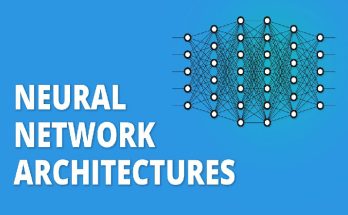Introduction to Robotic Process Automation (RPA)
Welcome to the exciting world of Robotic Process Automation (RPA), where cutting-edge technology meets seamless efficiency. In today’s fast-paced digital landscape, RPA has emerged as a game-changer for businesses looking to streamline processes, boost productivity, and drive innovation. Let’s dive into the latest trends shaping the future of RPA and discover how this transformative technology is revolutionizing industries across the board!

The Growth of RPA in Various Industries
Robotic Process Automation (RPA) has witnessed significant growth across various industries in recent years. Industries such as finance and banking have embraced RPA to streamline operations, reduce errors, and improve efficiency. The healthcare sector is leveraging RPA to enhance patient care by automating repetitive tasks like appointment scheduling and billing processes.
Manufacturing companies are implementing RPA to optimize production lines and minimize downtime through predictive maintenance capabilities. Retail businesses are using RPA for inventory management, order processing, and customer service automation, leading to improved customer satisfaction levels.
Moreover, the transportation industry is adopting RPA solutions for route optimization, freight management, and supply chain visibility. As technology continues to evolve rapidly, more industries are expected to integrate RPA into their operations to stay competitive in the market.
Advantages and Benefits of RPA
Robotic Process Automation (RPA) offers a multitude of advantages and benefits across various industries. One key benefit is the increased efficiency it brings to repetitive, rule-based tasks, allowing employees to focus on more strategic and creative work. RPA also enhances accuracy by reducing human errors in data entry and processing tasks.
Another advantage of RPA is its scalability, as software robots can handle large volumes of work without compromising quality or speed. This scalability makes it easier for businesses to adapt to changing demands and peaks in workload without the need for additional resources.
Moreover, RPA contributes to cost savings by streamlining processes, improving productivity, and reducing operational costs associated with manual labor. Additionally, organizations implementing RPA often experience improved compliance with regulations due to enhanced data accuracy and audit trails provided by automated processes.
Furthermore, RPA enables faster processing times for tasks such as invoice processing, customer service inquiries handling, and report generation. This leads to quicker decision-making processes within organizations while enhancing overall customer satisfaction levels.
Key Trends in RPA for 2021-2022
As we step into 2021 and look ahead to 2022, the landscape of Robotic Process Automation (RPA) is evolving rapidly. One key trend that stands out is the increased adoption of AI-driven RPA solutions. Companies are leveraging artificial intelligence to enhance automation capabilities and drive even greater efficiencies.
Another notable trend in RPA is the focus on hyperautomation. Organizations are expanding their automation efforts beyond traditional rule-based tasks to incorporate advanced technologies like machine learning and natural language processing. This holistic approach allows for end-to-end process automation and optimization.
Moreover, cloud-based RPA solutions are gaining traction as businesses seek more flexibility and scalability in their automation initiatives. Cloud deployment enables faster implementation, easier scalability, and improved accessibility across geographically dispersed teams.
Additionally, there’s a growing emphasis on governance and compliance within RPA deployments. As companies scale their automation programs, ensuring proper governance frameworks and adherence to regulatory requirements becomes paramount in maintaining operational integrity.
These trends signal an exciting future for RPA as organizations continue to innovate and leverage technology advancements to streamline operations and drive business growth.
Implementation Challenges and Solutions
Implementing Robotic Process Automation (RPA) can come with its fair share of challenges. One common hurdle is resistance from employees who fear job displacement or changes in their roles. To address this, companies need to communicate openly and provide training to upskill workers for more strategic tasks that require human intervention.
Another challenge is selecting the right processes for automation. It’s crucial to conduct a thorough analysis to identify repetitive, rule-based tasks that would benefit most from RPA implementation. Additionally, ensuring system compatibility and integration with existing IT infrastructure can be complex but is essential for seamless deployment.
Data security and compliance concerns also pose significant challenges during RPA implementation. Companies must prioritize cybersecurity measures and ensure adherence to regulatory requirements by implementing encryption protocols and access controls.
Moreover, scalability issues may arise as organizations expand their automation initiatives. To overcome this, businesses should develop a scalable roadmap that allows for incremental automation growth while continuously monitoring performance metrics for optimization opportunities.
Future Predictions for RPA
As technology continues to advance at a rapid pace, the future of Robotic Process Automation (RPA) is brimming with exciting possibilities. One prediction for RPA in the coming years is the increased integration of artificial intelligence and machine learning algorithms. This will enable robots to not only perform repetitive tasks but also learn from data and make decisions autonomously.
Another trend on the horizon is the expansion of RPA beyond back-office operations into customer-facing processes. Businesses are expected to leverage RPA to enhance customer service, streamline communication channels, and personalize interactions at scale.
Moreover, as cybersecurity threats become more sophisticated, RPA tools are projected to evolve with enhanced security features. Data protection measures and encryption protocols will be crucial components of future RPA systems to safeguard sensitive information.
In addition, collaboration between humans and robots will become even more seamless as RPA technologies improve their ability to work alongside human employees effectively. The blending of human creativity with robotic efficiency will redefine how work is accomplished across various industries.
The future landscape of RPA promises innovation, efficiency gains, and transformative changes that will reshape business processes in profound ways.
Conclusion:
Robotic Process Automation (RPA) is revolutionizing the way businesses operate by streamlining processes, increasing efficiency, and reducing costs. As RPA continues to evolve and integrate with emerging technologies like AI and machine learning, its potential for growth and innovation is limitless. By staying abreast of key trends, overcoming implementation challenges, and embracing future predictions, organizations can harness the full power of RPA to drive success in the digital era. Embracing this transformative technology will position businesses at the forefront of automation advancements in 2021-2022 and beyond.



